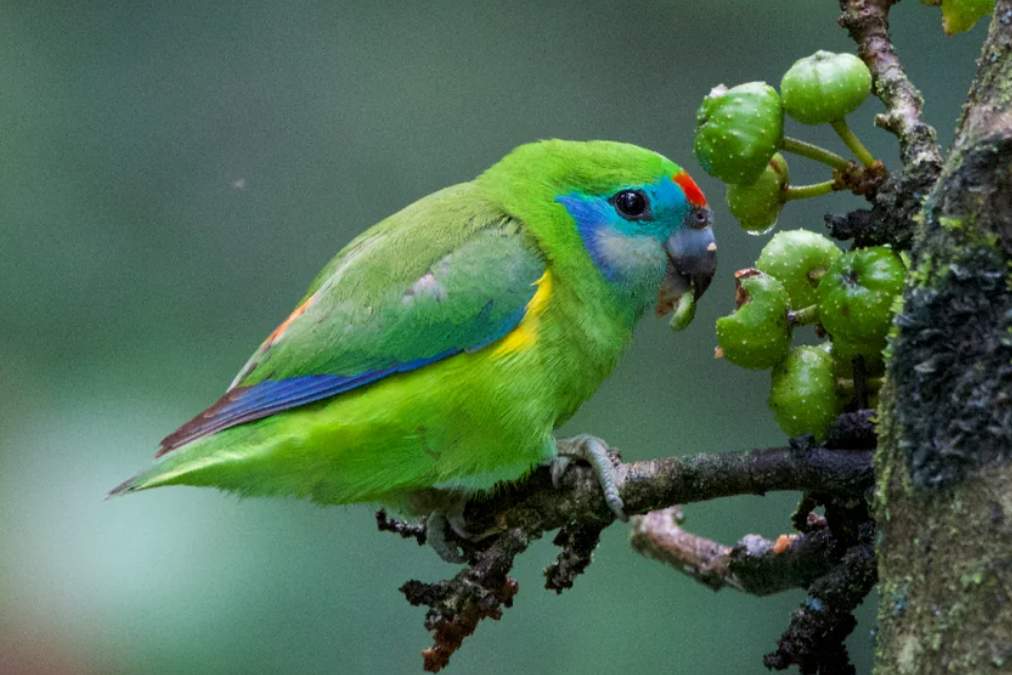The collared flycatcher (Ficedula albicollis) is about 13 cm in length. The adult males in summer plumage are prominent black and white small birds (much more contrasting than European Pied), with a very broad white collar completely encircling the nape to isolate the black cap; additionally, the wings show an enormous extent of white, and this deflects consideration from the small whitish rump, which is seldom conspicuous.

These birds are approached only by some semi-collared males in summer plumage, which show a wide white collar but always have a blackish nape, even if only a narrow stripe (which may not be obvious until views are obtained of the rear of the neck). Collared shows very little white at the sides of the tail, unlike semi-collared, and lacks a median-covert bar.
The adult male winter closely resembles the winter male European Pied but has black wings and a large white patch at the base of the primaries. Adult females are close to those semi-collared, but may be notable in spring by the absence of a median-covert bar (which may, though, be shown in autumn). In addition, many collared, at least in spring, show a pale grayish collar that offers some contrast with the crown and mantle, and often a paler and grayer rump. Although these features are hidden by brownish feather tipping in fresh autumn plumage (but maybe visible if the nape is examined in the hand),
The upper parts of female collared flycatchers are grayer and less olive-brown than in European pied, and, most prominently, the bases of the primaries show a distinctive white patch that is either rectangular in shape or thickens towards the edge of the wing (forming a club-shaped patch). The patch appears to virtually reach the edge of the wing and is lacking or just indicated by a tiny spot in European pied, while semi-collared shows a narrower bar (most of the white primary bases being concealed by the primary coverts).
In addition, the greater-covert bar and the edges of tertials tend to be wider and whiter than in female European Pied. The first-winter Collared is exceptionally similar to both the first-winter Semi-Collared and European Pied, but the former has more obvious white tips to the inner median coverts, forming a more prominent second wing bar.
Behavior is much like that of the European Pied, but migrants are more inclined to hunt from lower perches. Occasionally hybridizes with European Pied. On the other hand, the second primary is normally equal to or longer than the fifth (as in semi-collared); it is naturally shorter than the fifth in European Pied.
When compared to adult females, the male European Pied Flycatcher can be identified in the fall by having blacker tails and flying feathers. The first-summer male may be aged in spring by dull, worn, grayish primaries and less extensive white at the base of primaries than in adult male summer.
Many calls of Collared Flycatcher are similar to those of European Pied, but a typical alarm call seems to be diagnostic (replacing the European Pied ‘bit-bit’ of alarm). The Collared Flycatcher song is less frequently uttered than in European Pied and is slower and more drawled, with the phrases interspersed with thin, high sibilant notes.

Collared Flycatcher is known to interbreed occasionally with European Pied in the zone of overlap; male progeny (when in adult plumage) show an incomplete collar or some grayish tinge on the nape and are less white on primary bases. The Collared Flycatcher is a common bird, although somewhat local.







